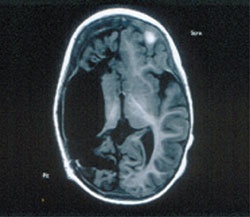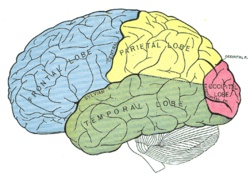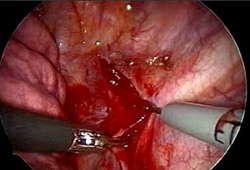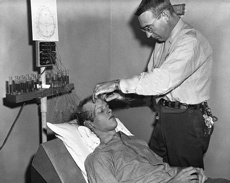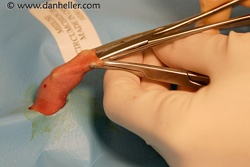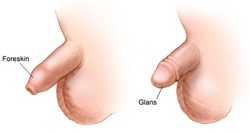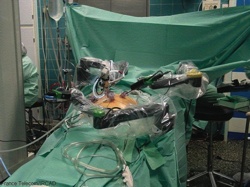 Weird Stuff
Weird Stuff  Weird Stuff
Weird Stuff  Our World
Our World 10 Archaeological Discoveries of 2025 That Refined History
 Weird Stuff
Weird Stuff 10 Fascinating Facts You Might Not Know About Snow
 Miscellaneous
Miscellaneous Top 10 Things Crypto Was Supposed to Change & What Actually Did
 History
History 10 Huge Historical Events That Happened on Christmas Eve
 Music
Music 10 Surprising Origin Stories of Your Favorite Holiday Songs
 History
History 10 Less Than Jolly Events That Occurred on December 25
 Weird Stuff
Weird Stuff 10 Funny Ways That Researchers Overthink Christmas
 Politics
Politics 10 Political Scandals That Sent Crowds Into the Streets
 Weird Stuff
Weird Stuff Ten Bizarre Facts About The Doge Meme
 Weird Stuff
Weird Stuff 10 Weird Things People Used to Do at New Year’s
 Our World
Our World 10 Archaeological Discoveries of 2025 That Refined History
 Weird Stuff
Weird Stuff 10 Fascinating Facts You Might Not Know About Snow
Who's Behind Listverse?

Jamie Frater
Head Editor
Jamie founded Listverse due to an insatiable desire to share fascinating, obscure, and bizarre facts. He has been a guest speaker on numerous national radio and television stations and is a five time published author.
More About Us Miscellaneous
Miscellaneous Top 10 Things Crypto Was Supposed to Change & What Actually Did
 History
History 10 Huge Historical Events That Happened on Christmas Eve
 Music
Music 10 Surprising Origin Stories of Your Favorite Holiday Songs
 History
History 10 Less Than Jolly Events That Occurred on December 25
 Weird Stuff
Weird Stuff 10 Funny Ways That Researchers Overthink Christmas
 Politics
Politics 10 Political Scandals That Sent Crowds Into the Streets
 Weird Stuff
Weird Stuff Ten Bizarre Facts About The Doge Meme
Top 10 Bizarre Surgical Procedures
WARNING: This list contains images of surgery. This list does not include surgical procedures that are now obsolete or obsolescent. The list also excludes cosmetic surgical procedures.
1. Hemispherectomy
Believe it or not, this surgical procedure involves removing or disabling an entire half of the brain. This procedure is used to treat a variety of seizure disorders where the source of the epilepsy is localized to a broad area of a single hemisphere of the brain. It is reserved for cases which can’t be managed with medication alone. The first time this surgery was performed on a human was in 1923 by Walter Dandy. All of the patients who receive this treatment suffer from partial or full paralysis on the side of the body opposite to the side of the brain removed. Most patients who have undergone this procedure will have neurons from the remaining hemisphere take over the tasks from the lost hemisphere by making new neural connections.
Just a medical dreamer trying to make his dreams a reality. Read the fascinating true story of The Immortalists: Charles Lindbergh, Dr. Alexis Carrel, and Their Daring Quest to Live Forever at Amazon.com!
2. Hemicorporectomy
Also known as translumbar amputation, this surgery removes the lower half of the body from above the pelvis. The result is that the sexual organs, anus, rectum, legs, pelvis bones, and urinary system are removed. It is a severely mutilating procedure recommended only as a last resort for patients with severe and potentially fatal illnesses such as osteomyelitis, tumors, severe traumas and intractable decubiti in, or around, the pelvis. This surgery has only been performed in a small number of cases. The surgical procedure is often done in two stages; however it is possible to conduct the surgery in one stage. The first stage is the discontinuation of the waste functions in colostomy (rectum) and ileal conduit (bladder). The second stage will be the actual amputation.
3. Bilateral Cingulotomy
This is a brain surgery used in pain treatment for severe cases of cancer. It involves disabling the cingulate gyrus, a small section of brain that connects the limbic region of the brain with the frontal lobes. It has also found use in psychosurgery (surgery for mental disorders) where it is very controversial. As a psychosurgical treatment it has almost totally replaced lobotomy as a procedure. Its use for alleviation of pain in cancer patients is reasonably well-documented and well-supported, but its use in treating people with depression is not.
4. Endoscopic Thoracic Sympathectomy
ETS is a surgery in which oprtions of the sympathetic nerve trunk are dissected. By cutting these nerve sections, the surgeon is able to treat severe cases of hyperhydrosis (excess sweating). What makes this bizarre is that a side-effect of this treatment is that the person no longer blushes. For that reason it has also become a cosmetic procedure for people who blush excessively. If only one side of the body is treated, a person who has undergone this surgery will have half of their body blushing while the other half remains in its natural state. For this reason the treatment is always performed on both sides of the body.
5. Vaginectomy
In a Vaginectomy, part or all of the vagina is surgically removed. This is normally used as a treatment for various forms of cancer but it also occurs in some sexual reassignment surgeries. It is normal for a surgeon to reconstruct the vagina after this surgery by using other parts of the patient’s body.
Don’t forget to sterilize before and after with Surgical Instrument Cleaner at Amazon.com!
6. Lobotomy
Lobotomy is a very controversial medical treatment in which the frontal lobes of the brain are destroyed. It consists of cutting the connections to and from, or simply destroying, the prefrontal cortex. While it is seldom performed nowadays, it does still occur. Lobotomies have been used in the past to treat a wide range of mental illnesses including schizophrenia. This procedure often results in major personality changes or even mental retardation. President Kennedy’s sister was given a lobotomy. Wikipedia has this to say:
Rosemary Kennedy, sister of President John F. Kennedy, was given a lobotomy when her father complained to doctors about the 23-year-old’s moodiness and growing interest in men. The procedure was personally performed by Walter Freeman. Instead of producing the desired result, however, the lobotomy reduced Rosemary to an infantile mentality that left her incontinent and staring blankly at walls for hours. Her verbal skills were reduced to unintelligible babble. To avoid political scandal, the nature of Rosemary’s affliction was hidden by her father for years, described to the public as the result of mental retardation. Her sister, Eunice Kennedy Shriver, founded the Special Olympics in her honor in 1968.
7. Penectomy
A Penectomy is the total removal of all, or parts, of the penis. It is normally used as a treatment for cancer, but it has sometimes had to be performed after a botched circumcision. Some men have undergone penectomies as a voluntary body modification, but professional opinion is divided as to whether or not the desire for penile amputation is a pathology, thus including it as part of a body dysmorphic disorder.
8. Circumcision
Circumcision is a very common procedure performed for religious reasons (amongst Jews and Muslims) and by many doctors who claim health benefits. Much controversy surrounds this procedure (in which the foreskin of the penis is surgically removed) as it is a non-essential surgery normally performed on a child that has no say in whether it is performed or not. Some adult men develop psychological issues as a result of circumcision, which leads us to the next bizarre surgery: foreskin restoration.
9. Foreskin Restoration
Foreskin restoration is the process of expanding the residual skin on the penis, via surgical or non-surgical methods, to create the appearance of a natural foreskin (prepuce) covering the glans penis. Foreskin restoration techniques are most commonly undertaken by men who have been circumcised or who have sustained an injury, but are also used by uncircumcised men who desire a longer foreskin and by men who have phimosis. Some men cite a desire to regain a sense of control over their sexual organs and regaining lost self esteem. European Jews, along with men circumcised for medical reasons, sought out underground foreskin restoration operations during World War II as a method to escape Nazi persecution.
10. Lindbergh Operation
The Lindbergh Operation is included here as a special mention. It was the first surgery ever performed entirely with robots being guided by doctors through telecommunications. The surgery occurred in France and was controlled by French doctors in New York. The operation was performed successfully on September 7th, 2001 by Professor Jacques Marescaux and his team from the IRCAD (Institute for Research into Cancer of the Digestive System). This was the first time in medical history that a technical solution proved capable of reducing the time delay inherent to long distance transmissions sufficiently to make this type of procedure possible. The 45-minute procedure consisted in removing the gallbladder of a patient in surgical ward A in Strasbourg Civil Hospital, in Eastern France. From New York, the surgeon controlled the arms of the ZEUS™ Robotic Surgical System, designed by Computer Motion, to operate on the patient. The link between the robotic system and the surgeon was provided by a high-speed fiberoptic service deployed thanks to the combined efforts of several France Telecom group entities.
Sources: Wikipedia
Technorati Tags: Bizarre, surgery
